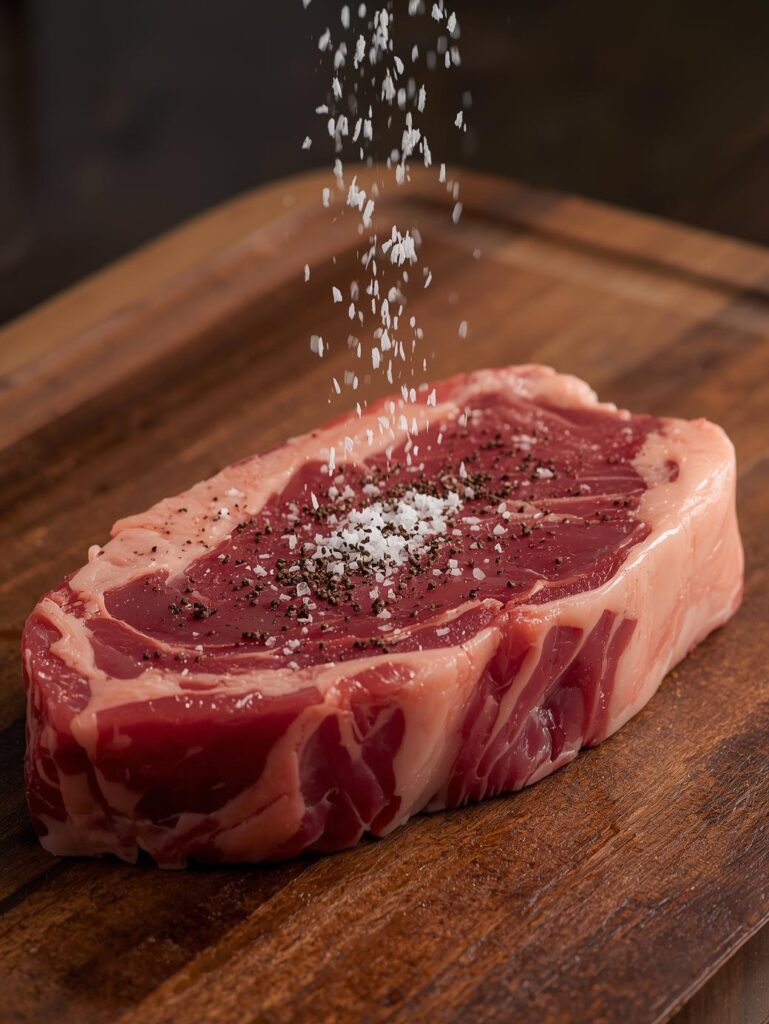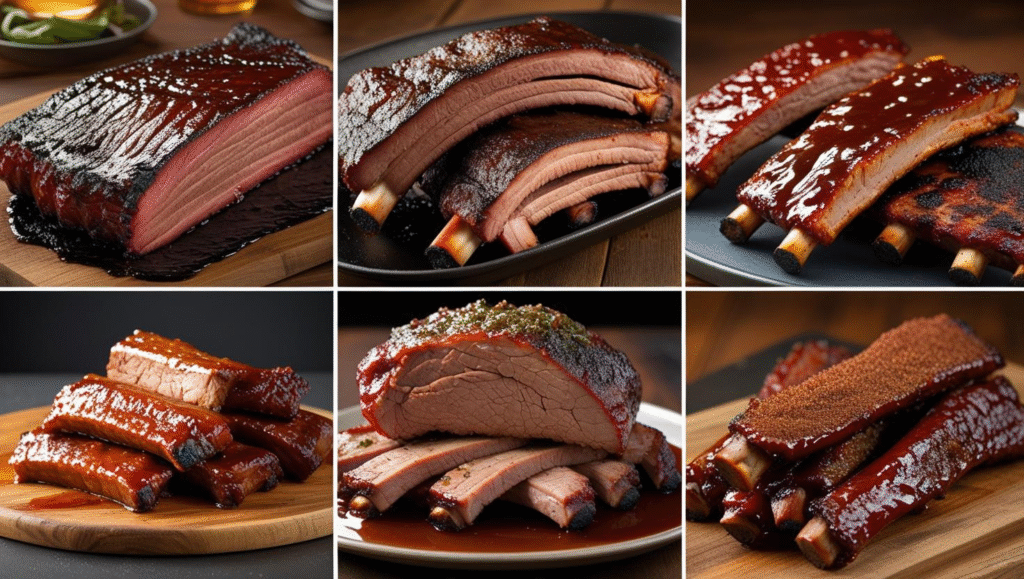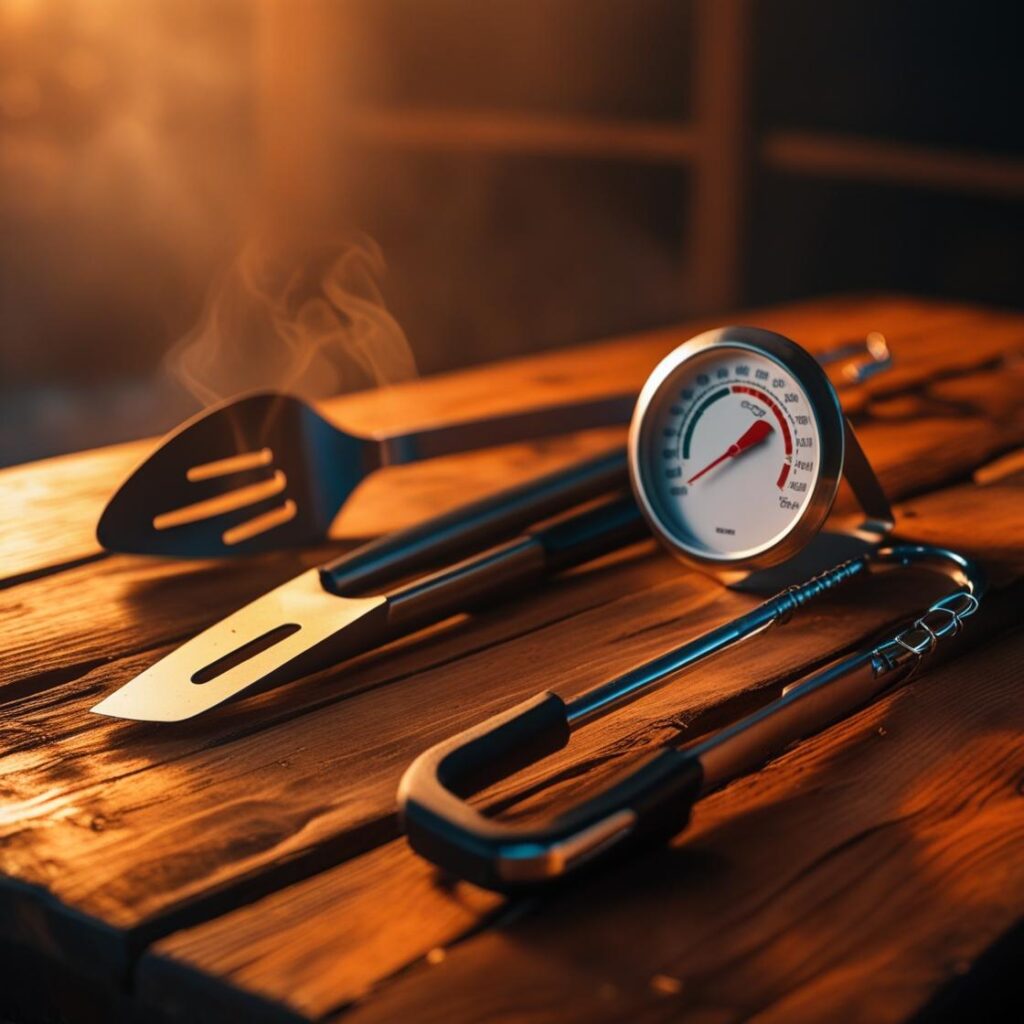9 Seasoning Blunders That Overpower Natural Meat Taste
There are few things more satisfying than cooking a beautiful piece of meat. Whether it’s a premium steak, a juicy pork shoulder, or a whole roasted chicken, the goal is always the same: to create a dish that highlights the meat’s delicious, natural flavor. But too often, a great cut of meat is ruined by a few simple seasoning blunders. Instead of enhancing the taste, the seasoning overpowers it, leaving you with a final product that’s either too salty, too spicy, or just plain bland.
This guide is your masterclass in the art of seasoning. We’ll show you the 9 seasoning blunders that home cooks make most often and, more importantly, provide you with the professional fixes you need. By learning how to season meat correctly, you’ll ensure that the delicious, natural meat taste is always the star of the show.
The Core Principle: Enhance, Don’t Overpower
Think of seasoning as a supporting actor, not the main star. Its job is to enhance the natural meat taste, not to hide it. A perfectly seasoned piece of meat should taste like itself, only better. This principle is at the heart of all great cooking and will help you avoid the most common seasoning mistakes.
9 Seasoning Blunders That Overpower Natural Meat Taste (and How to Fix Them)
1. Over-Seasoning
This is the most common and easily avoidable of all the seasoning blunders.
- Why it happens: Many people are afraid they won’t add enough seasoning, so they pile on a thick, dense layer of rub. This creates a salty, bitter, and sometimes pasty crust that completely overpowers the meat’s flavor. The seasoning itself becomes a bitter, hard shell.
- Professional Fix: Be generous but not excessive. For large cuts like brisket, you want a light, even coat that covers the entire surface without a “caked-on” look. For steaks, a thick dusting of coarse salt and pepper is all you need. You can always add more at the table, but you can’t take it away once it’s on.
2. Seasoning at the Wrong Time
When you season your meat is almost as important as what you season it with.
- Why it happens: Seasoning a piece of meat with salt too far in advance can actually dry it out as the salt draws moisture to the surface. Seasoning too late, like right before it goes on the grill, doesn’t give the salt time to dissolve and penetrate the meat, leaving you with a less flavorful result.
- Professional Fix: For most cuts, you want to season at least 40 minutes before cooking. The salt will first draw moisture out, then the meat will reabsorb it, along with the salt, through a process called osmosis. This creates a natural brine that seasons the meat from within. This is why how to season meat correctly is so important for juiciness.
3. Not Using Coarse Salt
The type of salt you use makes a huge difference in the final product.
- Why it happens: Fine table salt is very concentrated. A small amount can make your meat taste overly salty, and it can dissolve too quickly, drawing out too much moisture.
- Professional Fix: Use coarse salt, such as kosher salt or sea salt flakes. Their larger crystals are easier to control and provide a more even seasoning. They also draw moisture out more slowly, allowing for a better brine. This is a crucial one of the seasoning tips for avoiding a salty crust.
4. Using Too Many Ingredients
A good spice blend can be great, but a complicated one can mask the meat’s flavor.
- Why it happens: Trying to use every spice in your pantry is a recipe for disaster. The flavors clash and compete, leaving you with a confusing, jumbled taste.
- Professional Fix: Keep it simple. A good steak needs nothing more than salt and pepper. For other cuts, choose a few key spices that complement each other. Start with a simple base of salt, pepper, garlic powder, and onion powder, and add one or two other spices you love.
5. Not Understanding Flavor Profiles
The best meat rub complements the meat’s flavor, not hides it.
- Why it happens: A strong, bitter meat rub like one with too much smoked paprika can overpower the delicate taste of chicken. Similarly, a sweet, sugary rub can burn and turn bitter on the grill.
- Professional Fix: Match the rub to the meat. Use bold, earthy rubs with beef. Pair sweet and fruity rubs with pork. Use light, herbal seasonings with chicken and fish. For more on how to avoid bitter flavors in your cooking, read our guide on 8 wood smoking errors that make meat bitter.
6. Not Patting the Meat Dry First
Seasoning wet meat is one of the most common seasoning blunders.
- Why it happens: A wet surface prevents a great crust from forming. The seasoning won’t stick properly, and the meat will steam instead of searing. This is a fundamental error we discuss in our guides on 5 marinating mistakes that make meat tough and 10 grilling errors that ruin perfect steak.
- Professional Fix: Always pat your meat completely dry with a paper towel before you apply any seasoning. A dry surface is essential for a good sear and for the seasoning to stick properly.
7. Applying Rub to Cold Meat
Seasoning is not just about what you use, but how the meat is prepared to receive it.
- Why it happens: Applying a rub to cold meat can cause it to “clump” and not adhere evenly. It also prevents the salt from penetrating the meat effectively.
- Professional Fix: Let your meat come to room temperature for at least 30 minutes before seasoning. This ensures the salt will dissolve and penetrate evenly. As we mention in our guide on 10 grilling errors that ruin perfect steak, a cold steak cooks unevenly.
8. Using Old or Stale Spices
Spices don’t last forever. Using old spices is a subtle but impactful one of the seasoning blunders.
- Why it happens: Over time, the volatile oils that give spices their flavor evaporate. The spices become dull, tasteless, and powdery. You’ll end up using more to try and get a flavor that isn’t there, leading to a tough, chalky crust.
- Professional Fix: Use fresh, high-quality spices. Buy small amounts and store them in an airtight container away from light and heat. If you can’t remember when you bought a spice, give it a sniff. If it doesn’t smell like anything, it won’t taste like anything.
9. Not Considering the Cooking Method
The way you cook your meat affects what kind of seasoning you should use.
- Why it happens: A rub with lots of sugar can be perfect for low-and-slow smoking, but if you put that on a steak that you’re searing over high heat, the sugar will burn and turn black and bitter.
- Professional Fix: Tailor your seasoning to your cooking method. For high-heat grilling or pan-searing, use a simple seasoning of salt and pepper. For low-and-slow smoking, use a rub with a little bit of sugar for a great bark.
| Seasoning Blunder | Why It Happens | Professional Fix |
| 1. Over-Seasoning | Too much seasoning clogs the meat. | Use a light, even coat; be generous but not excessive. |
| 2. Wrong Timing | Doesn’t allow salt to penetrate. | Season at least 40 minutes before cooking. |
| 3. Wrong Salt Type | Fine salt makes meat too salty. | Use coarse salt like kosher salt or sea salt. |
| 4. Too Many Ingredients | Flavors clash and overpower. | Stick to 3-4 complementary ingredients. |
| 5. Wrong Flavor Profile | Doesn’t match the meat. | Match the rub to the meat (e.g., bold for beef, mild for chicken). |
| 6. Wet Meat | Seasoning won’t stick, no crust. | Always pat the meat dry before seasoning. |
| 7. Cold Meat | Clumpy seasoning, uneven penetration. | Let the meat come to room temperature. |
| 8. Stale Spices | No flavor, leads to more seasoning. | Use fresh, high-quality spices. |
| 9. Wrong Method | Sugar burns over high heat. | Tailor seasoning to the cooking method. |
Conclusion
The art of seasoning is a subtle one. It’s not about overpowering the meat, but about bringing out its best qualities. By understanding and avoiding these 9 seasoning blunders, you can become a true master of flavor. Remember, the goal is always to enhance that delicious, natural meat taste that you paid for. So, the next time you get ready to cook, season with confidence, and let the meat shine.
FAQ: 9 Seasoning Blunders That Overpower Natural Meat Taste
1. How much salt should I use on a steak?
A good rule of thumb is to apply a generous amount of coarse salt until the surface of the steak is lightly coated. You can see the salt crystals on the meat, but they aren’t caked on.
2. Can I use a pre-made spice blend?
Yes, you can. Just be sure to read the ingredients and choose a high-quality blend that complements your meat. Be mindful of the salt content, as some pre-made blends are very high in salt.
3. What’s the difference between a rub and a seasoning?
The terms are often used interchangeably, but a rub is typically a blend of spices meant to be applied to the exterior of the meat. A seasoning can refer to just salt and pepper or any other spice you use.
4. Is it better to season with salt or a salt-free rub?
For most cooking, it’s best to apply salt separately. This allows you to control the saltiness of the final product and apply it at the right time for maximum flavor penetration.
5. How do I fix over-salted meat?
If your meat is still raw, you can scrape off the excess seasoning and pat the meat dry. If it’s already cooked, you can try serving it with an unsalted sauce or a slice of fresh lemon to help balance the flavor.
6. Should I use sugar in my meat rub?
Sugar can be great for low-and-slow cooking methods like smoking, as it helps create a nice, caramelized crust (or “bark”). However, it will burn over high heat, so it’s not a good idea for grilling steaks.
7. What’s the biggest takeaway from this guide?
The biggest takeaway is that simple is almost always better. Focus on using a few high-quality, fresh spices and a good coarse salt. Respect the natural meat taste and let it shine.






